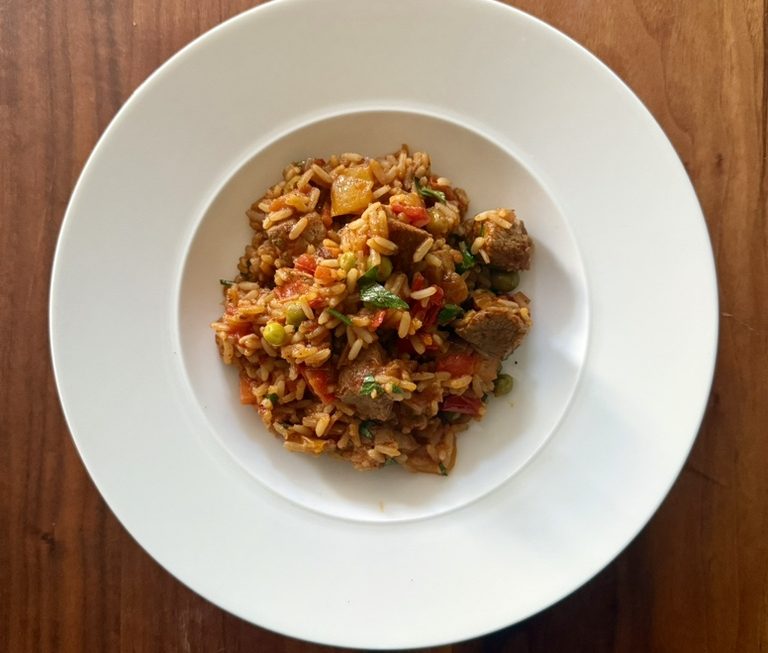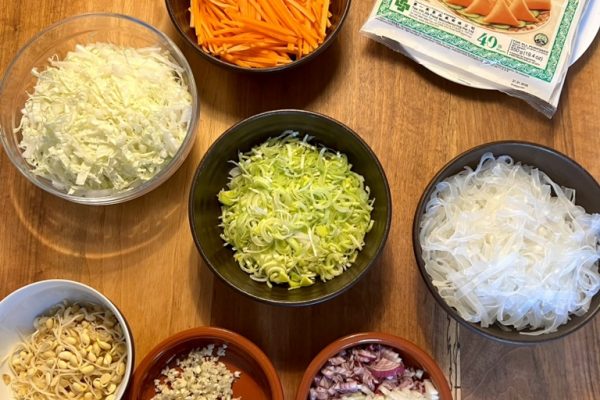Djuvec (pronounced Joo-vetch) is a staple in many Balkan cuisines. It is a rice dish that can be served with or without meat and can be eaten as a main meal or a side dish. The name is derived from the Turkish word “güveç,” which refers to a clay pot (and also a dish).
The Balkans is a region in Southeast Europe, named after the Balkan Mountains. It includes Bosnia and Herzegovina, Montenegro, Serbia, Kosovo, Albania, North Macedonia and Bulgaria, as well as parts of Slovenia, Croatia, Romania and (a very small part of) Turkey. Although Greece is geographically located in the Balkans, it is not usually included culturally (just like Turkey), as it has its own history and cuisine – more strongly influenced by Mediterranean and Byzantine cultures.
Politically, a distinction is made today between the Western Balkans and the Eastern Balkans, but in culinary terms, the boundaries are fluid. Many dishes – such as Djuvec – are regional in character, but cannot be clearly attributed to any one country. The “Reisfleisch” prepared in Austria and the Hungarian “Bácskai rizses hús” also have a lot in common with Djuvec.
Bell peppers, onions and garlic are essential ingredients in this dish. Peas are a great addition, either fresh or frozen, but please never use tinned or jarred peas. Parsley is not essential but goes very well with this dish, as do carrots and fresh chillies.
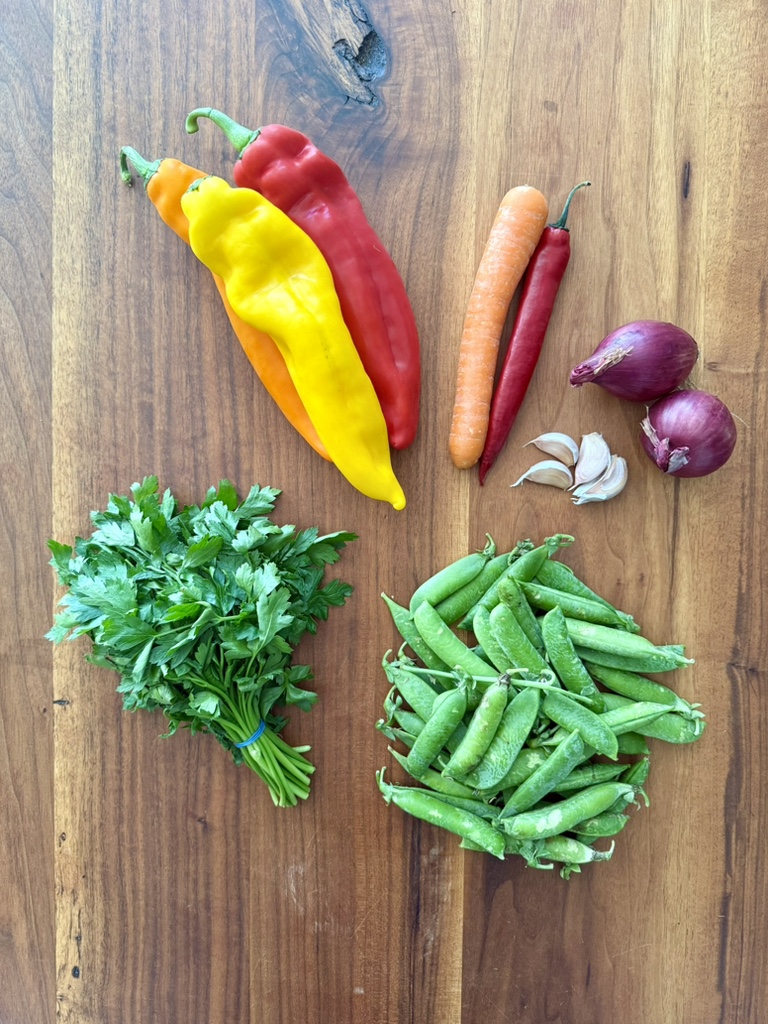
One cannot avoid mentioning the product ‘Vegeta’. Strictly speaking, it is an instant vegetable stock, but in Croatia in particular, Vegeta is regarded as a spice (mixture).
Vegeta has been produced in Croatia since 1959 by the Podravka company in Koprivnica and contains salt, dried vegetables, sugar, spices and monosodium glutamate. The latter adds umami, but we very rarely use it in our kitchen.
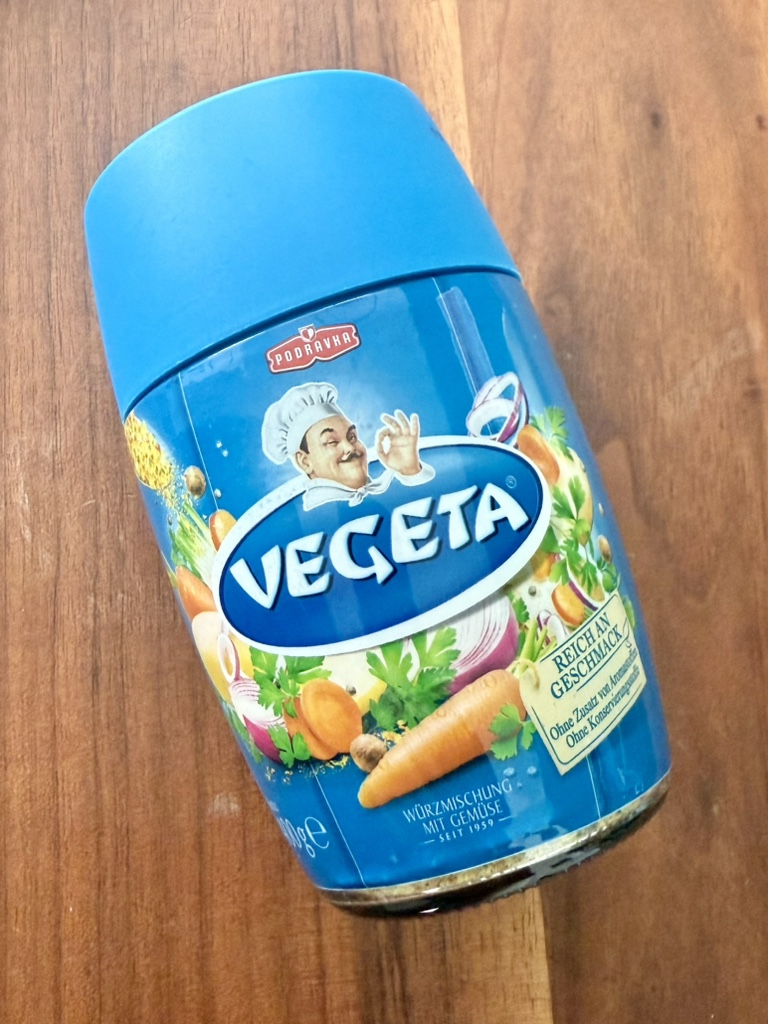
For a ‘real’ Djuvec, we use Vegeta today, but not in its powder form, as you often see in recipes, but dissolved in boiling water, which turns it into instant vegetable stock.
You will also need tomato paste (or alternatively tomato passata) and, of course, rice. This must be long-grain rice; varieties such as basmati are not suitable for us in terms of taste. We like to use jasmine rice from Asia or long-grain rice from the Western Hemisphere, which can also be parboiled rice.
We usually have a jar of ajvar in the fridge, which is a paste made from roasted red pointed peppers and aubergines that goes perfectly with djuvec, so we use that too.
If you want to cook with meat, pork is the typical choice. Chicken or lamb are less common. Lean cuts such as pork loin are not suitable here – they would become dry. Shoulder is a good choice, we even use the more marbled neck.
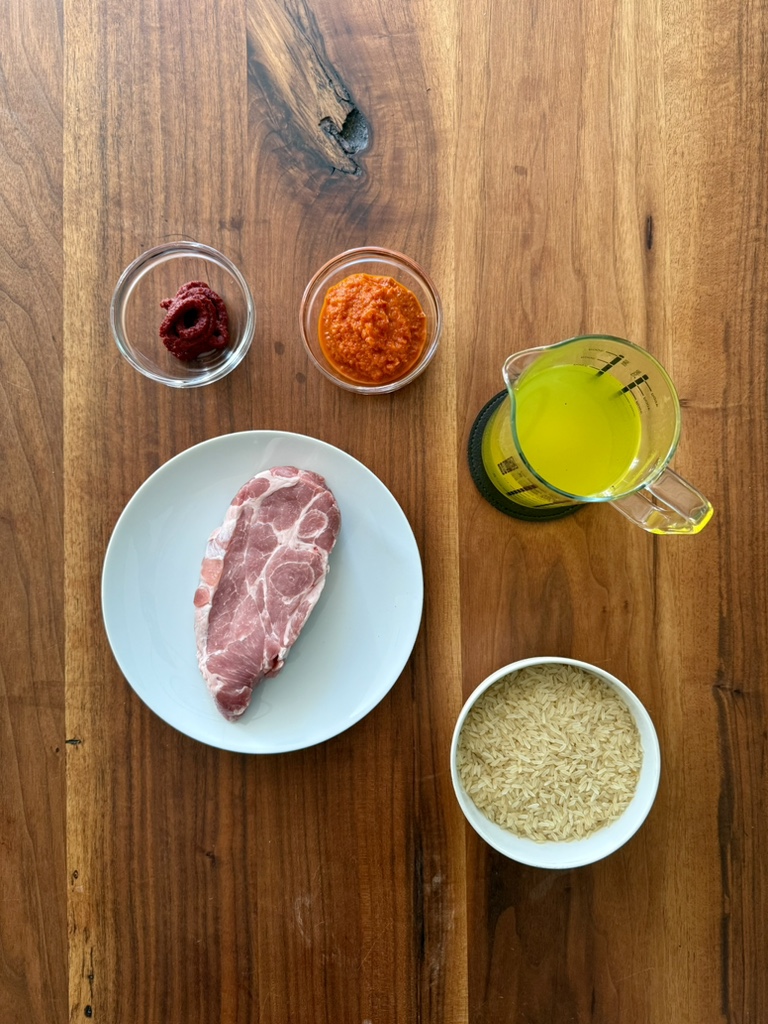
If using meat, first cut it into small cubes measuring 1–1.5 cm and brown it on all sides in a little neutral oil or olive oil over medium-high heat. To do this, place it in the hot pan and leave it to cook for 2–3 minutes before turning it over. If you stir constantly at this point, you will cook the meat instead of frying it. Once it has browned, set it aside.
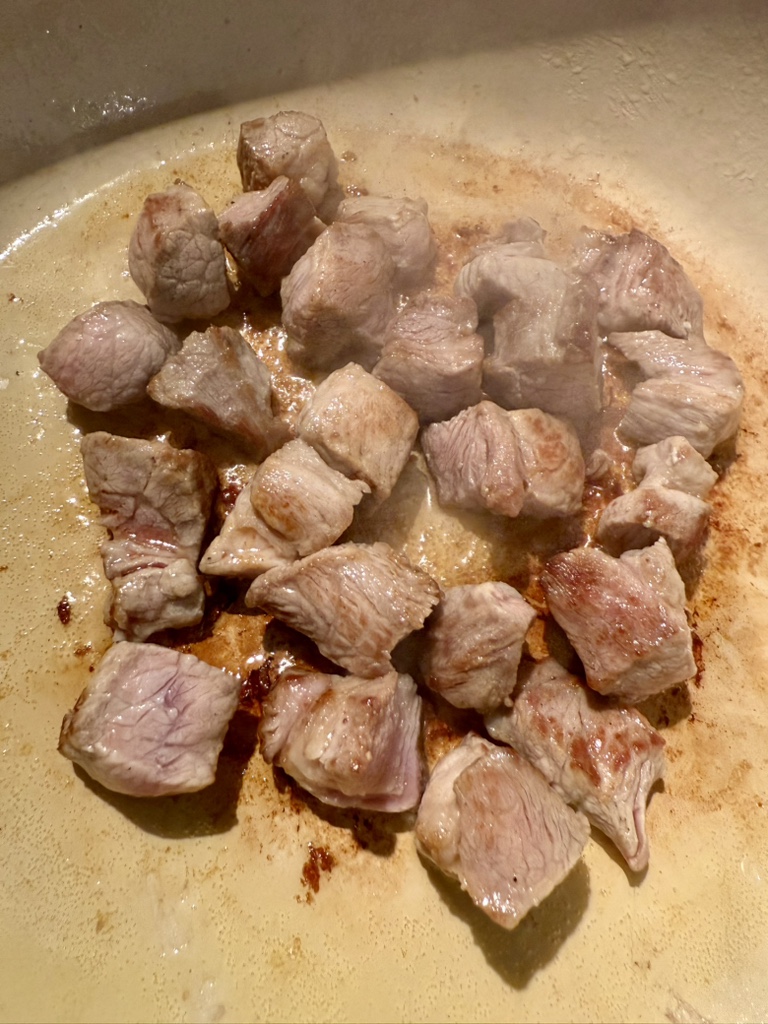
In the same pan, sauté chopped onions for 3–4 minutes until they are fragrant and almost browned. Then add chopped garlic. If, like us, you want firm vegetables in your djuvec, add them to the pan with the garlic.
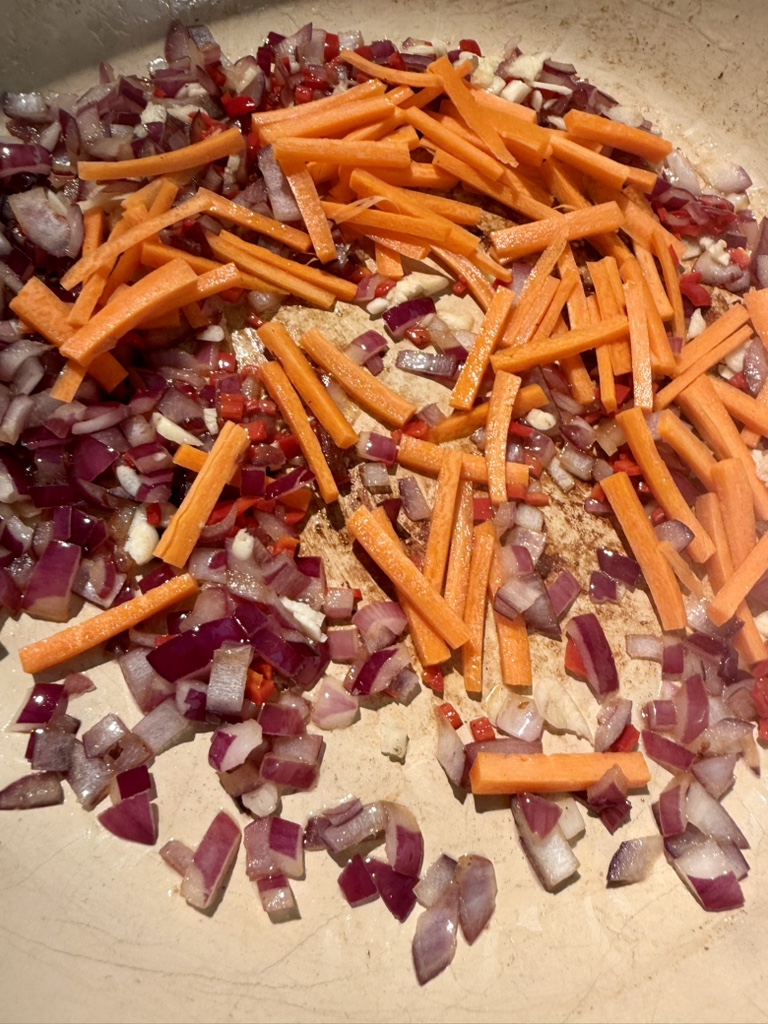
After 2 minutes, the garlic will also be fragrant, now it’s time to add plenty of peppers. We sweat them for another 3–4 minutes, stirring so that their flavour can fully develop.
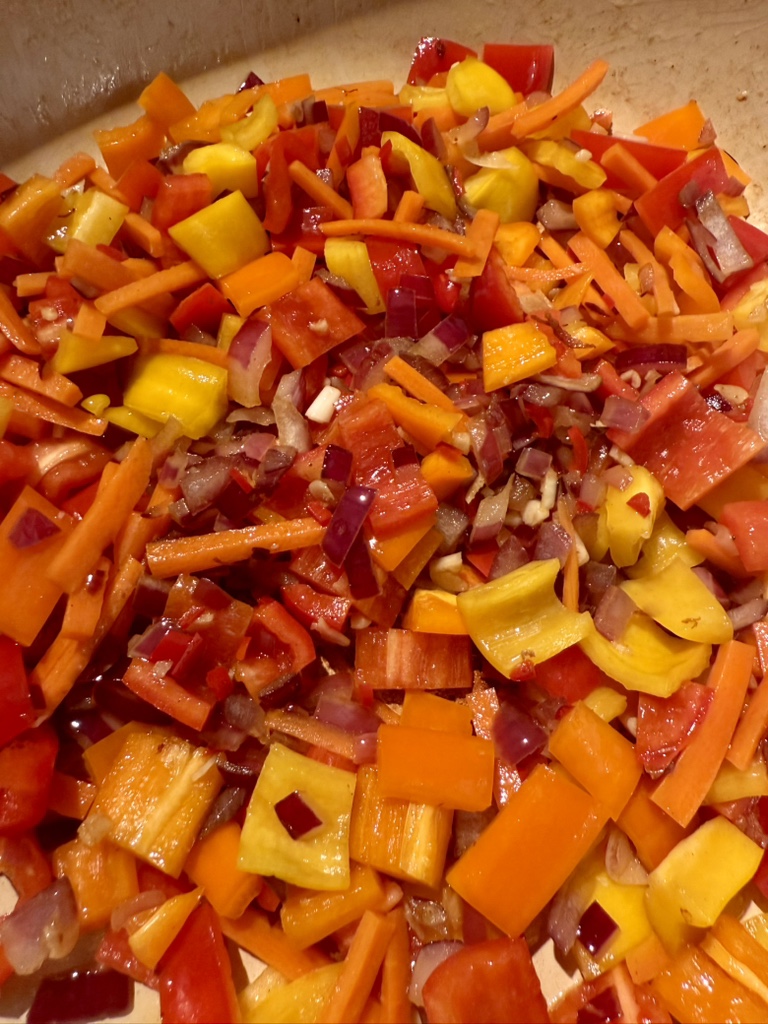
We clear a bit of space in the pan to fry some tomato paste. Now we season with black pepper, a little salt and sweet paprika powder – these spices are essential. You could also use coriander, but we opt for the Austro-Hungarian classic and season with additional ground caraway, dried marjoram and bay leaves.
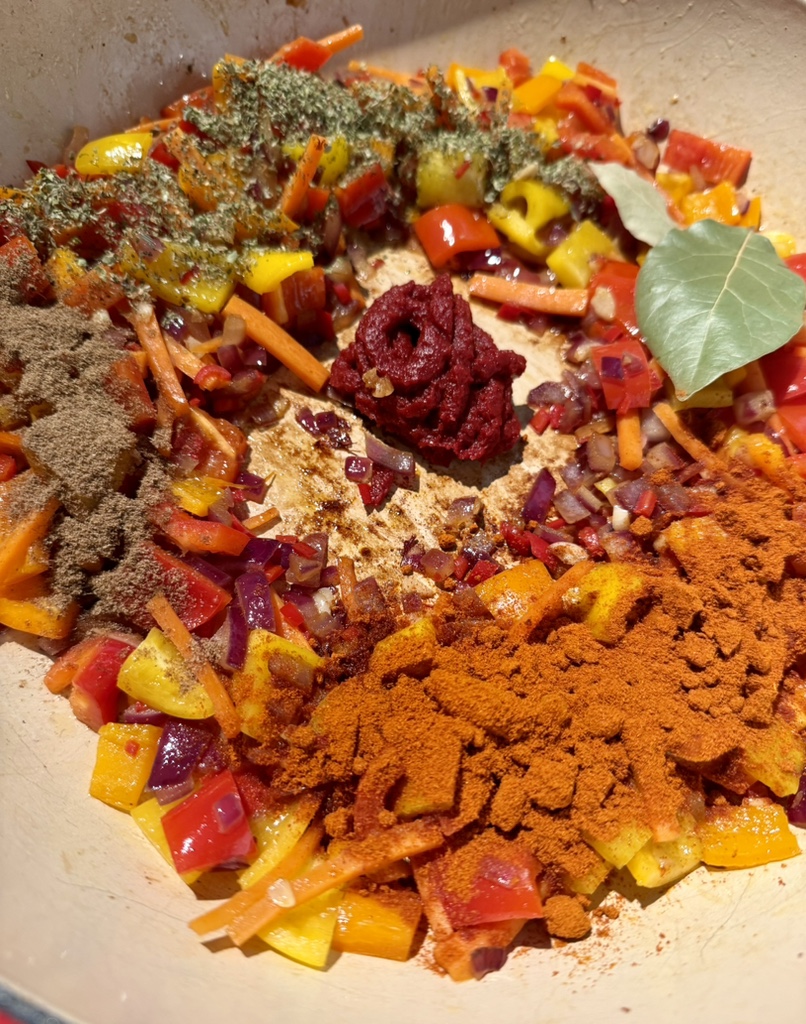
Stir everything together and roast for 1 minute, then deglaze with stock. Use a wooden spoon to stir the bottom of the pan to loosen any roasted bits, as these contain all the flavour that should be transferred to the liquid. The meat and its juices are also returned to the pan and gently cooked on a low heat for 30 minutes, just below boiling point. It is essential to cover the pan with a lid, otherwise the ratio of water to rice will be out of balance later on. If you are not cooking with meat, 10 minutes is sufficient at this stage.
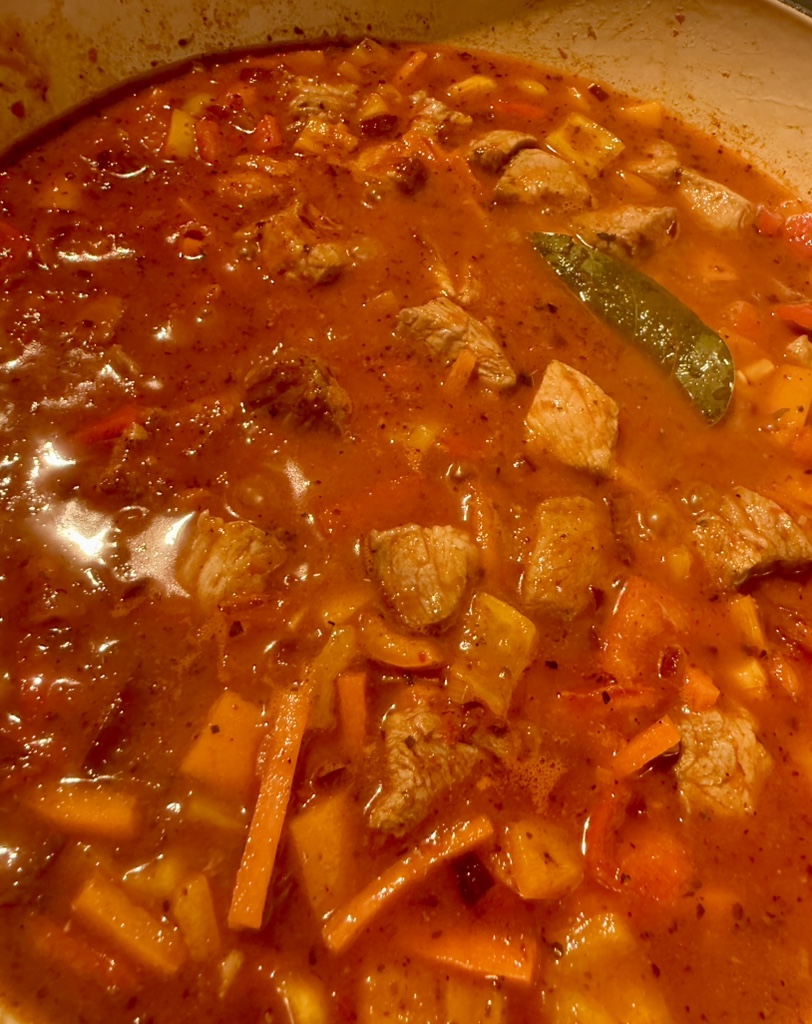
After this time, sprinkle the rice into the liquid and stir well so that it is evenly distributed. Also add the peas now; they only need a short time to cook.
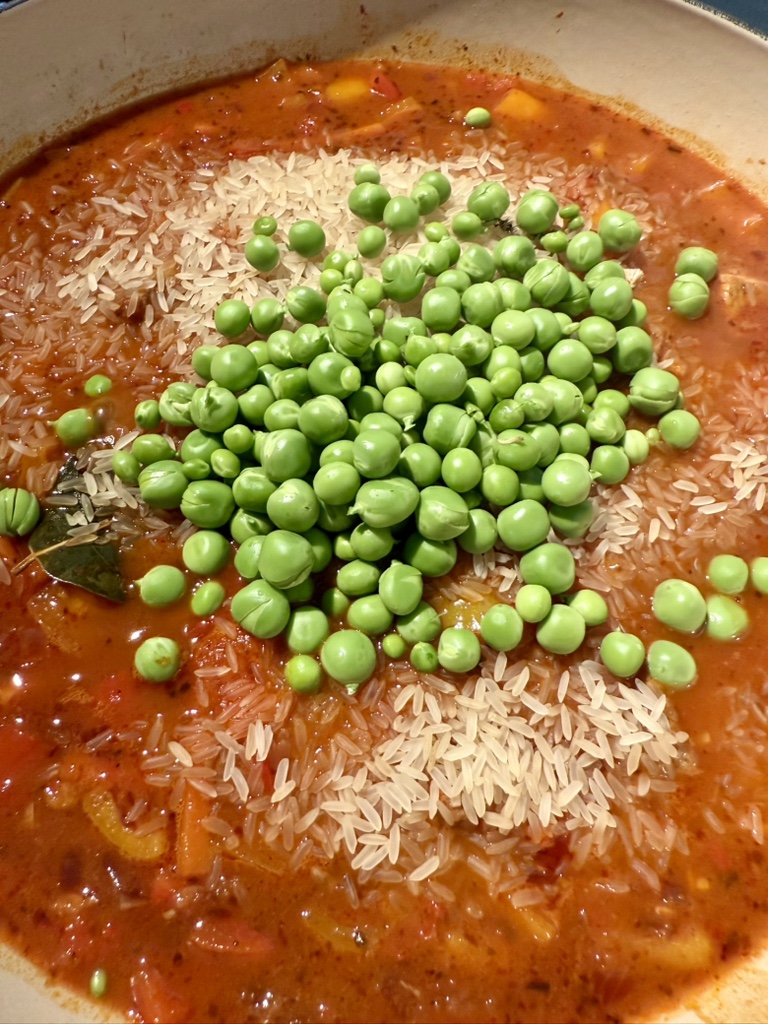
Leave it to simmer on a low heat with the lid on. Check the temperature: if it’s too low, the rice won’t cook; if it’s too high, it could burn. Depending on the type of rice, this will take around 20 minutes or a little longer. During this time, stir the rice every 5 minutes or so. If the dish seems too dry, simply add a little hot water. Finally, we add some roughly chopped parsley.
The rice intensely absorbs the flavour of the other ingredients. The dish is quite light because it contains hardly any fat. This makes it a very good side dish, especially in its vegetarian form.
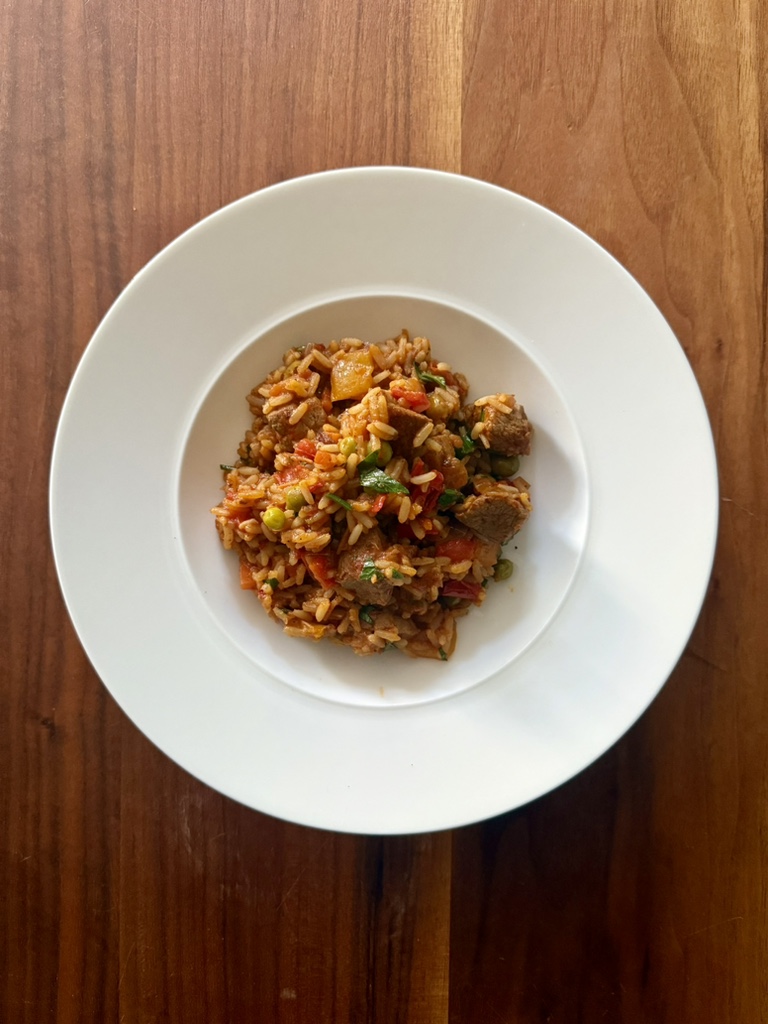
Enjoy.
And may the taste be with you.
Ingredients ( for 4 people):
2 tbsp neutral vegetable oil or olive oil
500 g pork (neck or shoulder)
– or no meat at all! –
350 g long-grain rice (jasmine rice, parboiled, but not basmati)
800 ml vegetable stock (and additional water if necessary)
2 onions
4 cloves of garlic
2–3 peppers (preferably red and yellow rather than green)
Optional: 1 carrot and/or 1 chilli, 100–200 g peas, 1 handful of parsley
2 tbsp tomato paste
Optional but recommended: 4 tbsp ajvar
2 bay leaves
1 tsp ground caraway (or 1 tsp coriander)
2 tsp dried marjoram
3 tsp sweet paprika powder
Freshly ground black pepper (and salt to taste)
